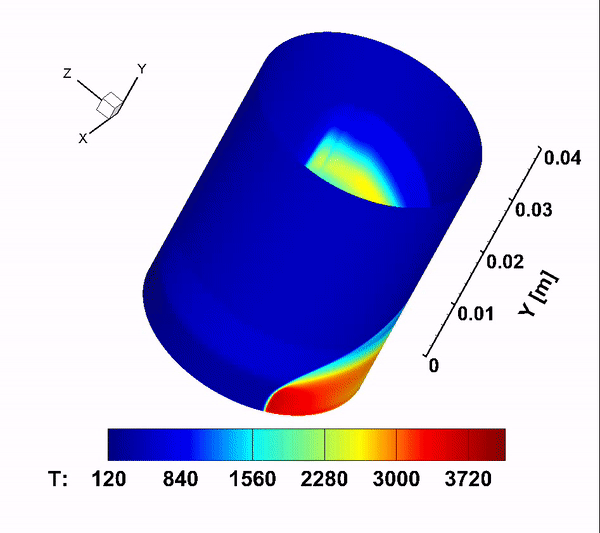Advanced Fluid Dynamics, Propulsion, and Energy Lab
Advanced Fluid Dynamics, Propulsion, and Energy Laboratory (AFPEL) is affiliated with the Department of mechanical engineering at Stony Brook University. The research interests of the AFPEL include theoretical and computational techniques for the solution of model problems in turbulence and high-speed flow.
 |
 |
A History of High Performance Computing Experience from the Group
Since 1992, all the turbulence simulation computer programs developed and executed in the AFPEL lab at SBU have been based on the use of parallel computers, initially using the PVM protocol, and then MPI after 1995. The development of computer programs and remote access to the supercomputers that run these codes take place at the PI’s Advanced Fluid Dynamics, Propulsion, and Energy Laboratory (AFPEL) located in the Heavy Engineering Building, College of Engineering and Applied Sciences, Stony Brook University (SBU), Long Island, New York.
Besides building our own clusters in the past, with NSF funding, the simulations in the lab have been based on massively parallel supercomputer systems in U.S. government-funded research centers. High Performance Computing (HPC) facilities on which Dr. Ladeinde was a PI or Co-PI include the iPSC/860 system acquired with DOE funding by the Applied Mathematics and Statistics department at SBU in 1990, the NSF-funded IBM SP/2 facility at Cornell University (1994-1999), the NSF-funded SP/2 facilities at the University of California at San Diego (UCSD) (1998-2001), the DoD HPCMO Common High Performance Computing Software Support Initiative (CHSSI) (2001-2010) and the supercomputer clusters at the Cornell Theory Center (CTC) (2004-2009). Dr. Ladeinde also obtained significant HPC time on the DoD HPC Shared Resource Centers at CEWES and NAVO, and the U.S. Department of Defense’s MSRC Supercomputing facility, all between 2001 and 2010. In the past few years, the projects in the lab on large eddy simulation (LES) and DNS have been carried out on the massively parallel SeaWulf cluster-based supercomputers at Stony Brook University, the cluster-based parallel supercomputer facility at Princeton University, and the IBM Blue Gene at BNL (2008-2015), which is co-managed by Stony Brook University. The lab also uses the LI-Red supercomputer system at Stony Brook University, as well as on the several million-dollar NSF-funded new replacement machines for the SeaWulf supercomputer system at Stony Brook University.
